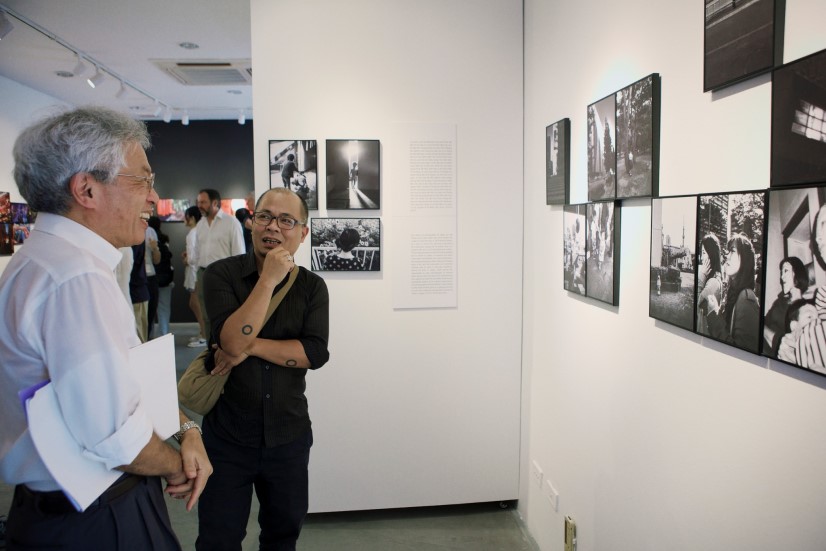More than 40 exhibitions, seminars, and workshops have been held in Hanoi over the past few months at the Photo Hanoi’23 – the first international biennial held in the capital city.
The event has attracted foreign organizations and international artists who are helping to promote Hanoi’23 Photo and the city itself. This is proof that the organizers’ ambition “to make Hanoi a photography city in Asia” is possible.
Photography Biennale helps promote the country’s image
Taking examples of the world’s most famous film festivals and photography biennials, such as the Bamako Biennial in Mali, Objectifs in Singapore, and Kyotographie in Japan, the French Embassy in Vietnam and the Government of Hanoi have joined hands to organize Photo Hanoi’23 Biennale with the ambition of “making Hanoi a photography city in Asia”.
| Photo Hanoi’23 brings an exciting atmosphere. Photo courtesy of organizing board |
Thierry Vergon, Director of the French Institute in Vietnam and coordinator of the project, said that Photo Hanoi’23 will portray Vietnam with different cultures and help develop Vietnamese photography through good examples of world photography.
“The fact that international photographers, curators, and collectors will share their feelings on social networks as well as their network of relationships when they return home will promote Hanoi more widely,” added Vergon.
Renowned French photographer Philippe Marinig agreed, adding that international art and culture events always bring economic benefits as they are an effective channel to promote local brands and images. “Over a period of weeks to months, artists, curators, and collectors from all over the world gather in the city where the biennial is held. Obviously, the locality will receive income from tourism, shopping, and consumption,” he said.
Philippe believed that art festivals provide opportunities for young artists to learn and build relationships with curators and collectors. He highly appreciated Photo Hanoi’23 and affirmed that the event had initially succeeded in shaping the photography market and creating an ecological system for photography, including galleries, museums, artists, curators, collectors, critics, and audiences…
Beyond a festival
With experience in organizing the Photo Phnom Penh Festival dating back to 2008, Valentin Rodriguez, Cultural Attaché of the French Embassy in Cambodia, said that continuity is very important.
He also emphasized the role of the media in developing a love for photography. Creative activities must be aimed at the public, which is what artists must decide from the beginning of their composition.
| Renowned French photographer Philippe Marinig is seen at an event of Photo Hanoi’23. Photo courtesy of the organizing board |
In addition, to help artists increase their income, Valentin Rodriguez suggested that the art festival could be accompanied by training activities. Artists can participate in workshops within the festival or in art schools. He believes that this is an important factor in building a professional and synchronized photography ecosystem.
Pascal Beausse, Director of the photography collection at the National Center for Visual Arts in France, also said that the art festival is a platform for young artists. Pascal Beausse’s center often prioritizes buying their work, helping them with their debut exhibition, and commissioning young artists. This is not only financial support, but also a great recognition and encouragement.
“As a government agency, we collect works that have a fresh perspective on the world. That is why we always pay attention to equality when collecting works, namely the gender ratio, the regional factor of the artist,” said Pascal Beausse.
Nguyen Thi Thu Ha, Director of VICAS Art Studio (Vietnam Institute of Culture and Arts Studies), said that art festivals in Vietnam are often organized to celebrate a particular event in the country.
“From the experience of participating in Vietnam Design Week and Vietnam Festival of Creativity and Design, I think we need to base it on actual research and public evaluation to build a festival that goes on regularly like the Photo Phnom Penh festival,” Ha said.
Moreover, organizers need to maximize domestic and international resources to benefit artists and continue artistic plans.
Ha also suggested a training program to improve festival organizing capacity, especially human resources, fundraising, partnership, communication, among others. The move would make international arts festivals professional and effective.






